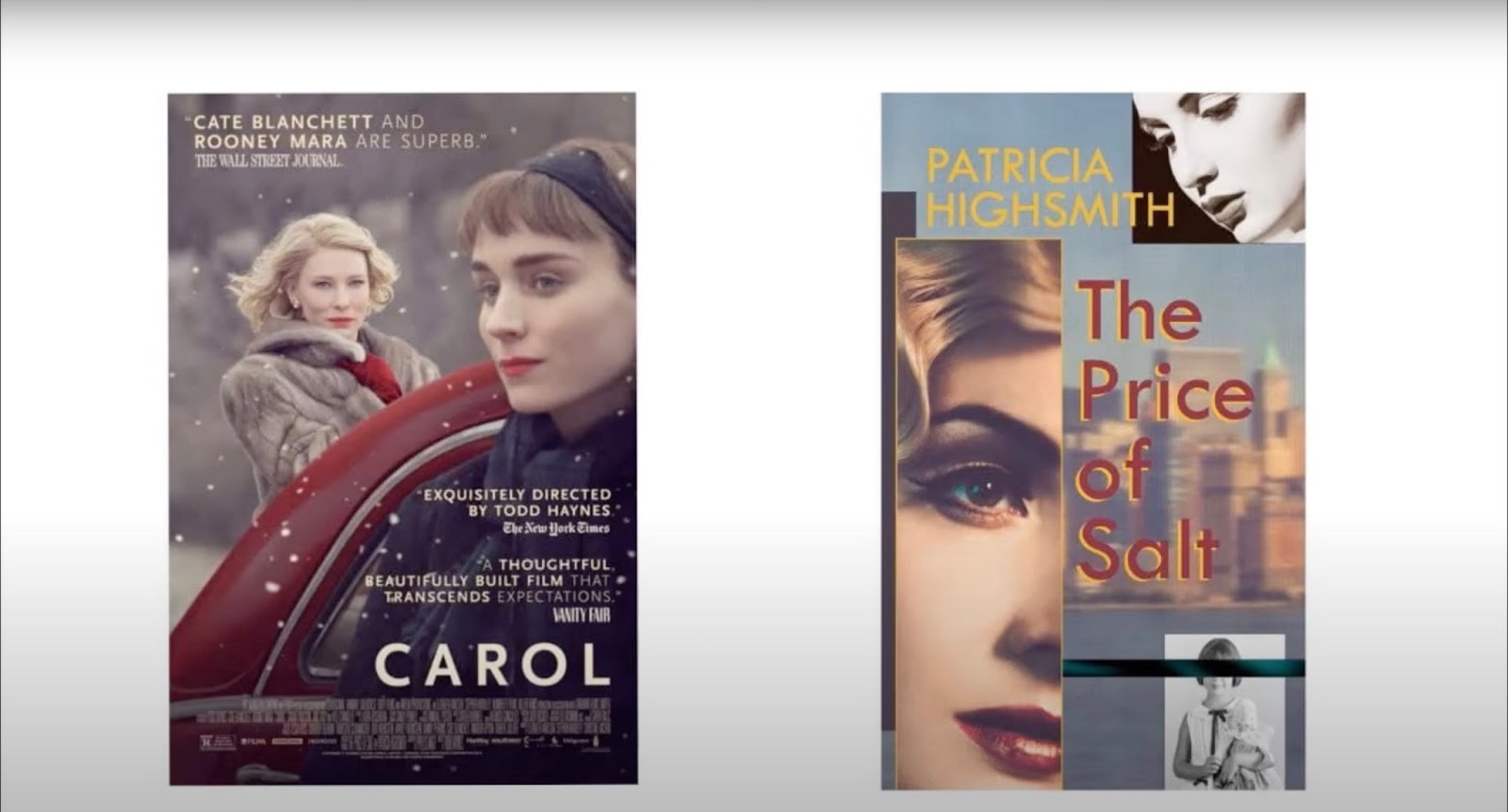
The adaptation of a literary work into a cinematic experience often sparks debates among enthusiasts. Patricia Highsmith’s novel “The Price of Salt,” later adapted into the movie “Carol” directed by Todd Haynes, provides a compelling case study for such discussions. This article delves into the intricacies of the book and its on-screen rendition, exploring the characters, plot developments, and thematic elements that shape this poignant narrative.
Summary
“The Price of Salt,” originally published under Highsmith’s pseudonym Clair Morgan in 1952, underwent an interesting journey before gaining recognition. In 1983, the lesbian publishing house Naiad Press offered Highsmith a reprint deal, providing her with options to reclaim authorship. Highsmith chose to retain the pseudonym, a decision that added layers of complexity to the novel’s reception and interpretation.
Book Review
Therese
Therese, a young aspiring artist working in a department store, encounters Carol, a sophisticated woman going through a tumultuous divorce. Their chance meeting blossoms into a deep emotional connection, defying societal norms and expectations. Highsmith intricately portrays Therese’s internal struggles and burgeoning desires, capturing the essence of self-discovery and forbidden love.
Therese’s character development throughout the narrative reflects a nuanced exploration of identity and autonomy. Her evolution from a reserved individual to a confident partner in a same-sex relationship challenges conventional gender roles and highlights the transformative power of love.
Carol
Carol, a complex figure navigating the constraints of her marriage and societal prejudices, emerges as a symbol of resilience and defiance. Her unwavering commitment to her feelings for Therese despite external pressures underscores the novel’s central theme of authenticity and acceptance.
Highsmith’s portrayal of Carol delves into the emotional turmoil of a woman torn between societal expectations and personal fulfillment. Carol’s journey towards self-acceptance and liberation resonates with readers, offering a poignant reflection on the complexities of human relationships and desires.
The detective
Intriguingly woven into the narrative is the character of the detective hired by Carol’s husband, Harge, to gather evidence against her. This subplot adds a layer of suspense and tension to the story, heightening the stakes for Carol and Therese’s forbidden romance.
The detective’s role serves as a catalyst for the couple’s eventual separation, highlighting the pervasive influence of societal norms and legal constraints on personal relationships. His presence underscores the challenges faced by individuals who dare to defy societal conventions and embrace their true selves.
Carol leaving Therese
The pivotal moment when Carol decides to distance herself from Therese marks a turning point in their relationship. Driven by the fear of losing custody of her daughter and the looming threat of societal backlash, Carol makes a heartbreaking choice to protect her family at the cost of her own happiness.
This decision not only showcases Carol’s selflessness and sacrifice but also underscores the harsh realities faced by individuals in marginalized communities. Highsmith skillfully navigates the emotional complexities of separation, portraying the profound impact of societal pressures on personal choices and relationships.
The ending
Despite the challenges and obstacles they face, Carol and Therese’s reunion at the end of the novel offers a glimmer of hope and redemption. Their enduring love triumphs over adversity, culminating in a poignant conclusion that celebrates the resilience of the human spirit.
Highsmith’s choice to craft a bittersweet yet hopeful ending resonates with readers, emphasizing the enduring power of love and connection in the face of adversity. The novel’s conclusion serves as a testament to the strength of the human heart and its capacity to overcome societal barriers in pursuit of authentic happiness.
Views on gay relationships
“The Price of Salt” challenges prevailing attitudes towards same-sex relationships, offering a nuanced portrayal of love and desire beyond societal norms. Highsmith’s exploration of Carol and Therese’s relationship defies stereotypes and clichés, presenting a tender and authentic depiction of queer love.
By centering the narrative on the emotional depth and complexity of the protagonists’ bond, Highsmith dismantles misconceptions and prejudices surrounding gay relationships. The novel invites readers to empathize with the characters’ struggles and triumphs, fostering a deeper understanding of the universal nature of love and longing.
The painting
A recurring motif in the novel, the painting symbolizes the characters’ aspirations and desires, serving as a metaphor for their innermost thoughts and emotions. The painting acts as a visual representation of Carol and Therese’s unspoken feelings, mirroring their evolving relationship and shared experiences.
Highsmith’s use of the painting as a narrative device adds layers of symbolism and depth to the story, enriching the reader’s engagement with the characters’ inner lives. The painting becomes a silent witness to the protagonists’ journey towards self-discovery and mutual understanding, embodying the essence of their forbidden love.

Book vs Movie
Adaptation fidelity
| Aspect | Book | Movie |
|---|---|---|
| Characterization | Detailed exploration of inner thoughts | Visual cues and facial expressions |
| Narrative structure | Linear progression with introspection | Visual storytelling with cinematic flair |
| Dialogues | Rich dialogue reflecting character depth | Visual storytelling with minimal dialogue |
Visual aesthetics
- The movie captures the atmospheric beauty of the novel’s settings, enhancing the emotional resonance of key scenes;
- Cinematic techniques such as lighting and framing add a visual dimension to the characters’ emotions and interactions;
- The movie’s aesthetic choices complement the novel’s themes of love, longing, and societal constraints, creating a visually captivating adaptation.
Performance
- The actors’ portrayals of Therese and Carol bring depth and authenticity to their characters, capturing the nuances of their relationship;
- The chemistry between the leads enhances the emotional impact of their scenes together, immersing the audience in the intensity of their connection;
- The performances in the movie breathe life into Highsmith’s characters, translating the novel’s emotional depth onto the screen with sensitivity and grace.
Conclusion
In conclusion, the adaptation of “The Price of Salt” into the movie “Carol” offers a compelling exploration of love, desire, and societal expectations. Through nuanced characterizations, intricate plot developments, and thematic richness, both the book and the movie resonate with audiences, inviting them to reflect on the complexities of human relationships and the enduring power of love.
Highsmith’s timeless narrative continues to captivate readers and viewers alike, transcending temporal and cultural boundaries to offer a poignant meditation on identity, acceptance, and the pursuit of happiness. Whether experienced through the pages of the novel or the frames of the movie, “The Price of Salt” and “Carol” stand as testaments to the enduring legacy of queer literature and cinema, inspiring generations to embrace their true selves and celebrate the transformative power of love.